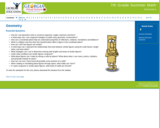
Middle Grades Math 07 Geometry
- Subject:
- Mathematics
- Material Type:
- Module
- Provider:
- Georgia Virtual
- Author:
- Georgia Virtual School
- Date Added:
- 06/02/2018

Middle Grades Math 07 Geometry
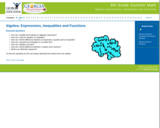
Middle Grades Math 8 Algebra Part One
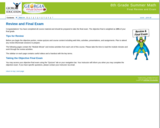
Middle Grades Math 8thfinal

The 100 Days of School collection includes Videos, Documents, Interactive, and Media Gallery for Grades PreK-K, K-2, 3-5, 6-8.

Students were randomly assigned a document from the list of 100 Milestone Documents compiled by the National Archives and Records Administration. They researched the document and completed several projects based on it including an essay, an oral presentation and a reading project. Based on the document, Executive Order 9066: Resulting in the Relocation of Japanese (1942). students chose a book to read and then share with a project of their own choosing. This student read Weedflower by Cynthia Kadohata and then created a scrapbook about the book and its connection to the document. Students were given a checklist/rubric of the required elements for the project.
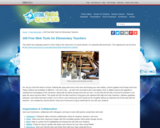
This article includes the URL and description of 100 free web tools that can be used by all teachers. The tools are categorized into search engines, math and science, games, templates and lesson plans, and more.

A collection of one hundred documents that are significant in shaping the history of the United States, beginning with the Lee Resolution of June 7, 1776, and ending with the Voting Rights Act of 1965.

Use this site to learn all about this Supreme Court decision that dealt with interstate commerce. View an image of the original document and read the complete text.

Explanations and examples to demonstrate how to identify independent and dependent clauses, prepositions and prepositional phrases, participle phrases and gerund phrases, and infinitives and infinitive phrases.
A free CK-12 account is required to view all materials.

The highly-respected Reading Rockets program offers both teachers and students a toolkit of ways to connect more actively with the materials they read. Some of these techniques are specifically for fiction-reading, others are designed for reading nonfiction and informational texts, while others are useful for any text.

Determine the formula for finding the coordinates of a point on a line segment.
A free CK-12 account is required to view all materials.
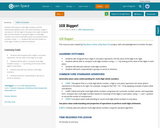
Students will explore multi-digit numbers and the relationship between ones, tens and hundreds; a digit in one place is 10x the digit in the place to its right. Students will use their bodies to represent digits in multi-digit numbers up to the hundredths place and compare these numbers using <, =, >. Students will use their bodies as multi-digit numbers to add and subtract.
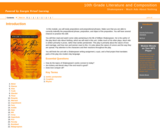
10th Lit Comp 10th Lit Shakespeare. Shakespeare - Much Ado About Nothing. Introduction Prepositional Phrases Shakespeares Life and Background Information Much Ado About Nothing Assignments Review Final Assessments
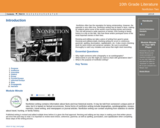
10th Lit Comp 13 1oth Lit Nonfiction Two S. Nonfiction Two. Introduction Revising and Editing Your Writing Nonfiction Review Biographies and Autobiographies Assignments Review Final Assessments Novel Research Project Requirements 10th Grade Literature
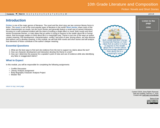
10th Lit Comp 17 10th Lit Comp Noveland Short Stories. Fiction: Novels and Short Stories. Introduction Key Terms Literary Basics Reading Assignment The Novel Characterizing Characters Characterization Conflict Mood and Tone Literature and Analysis

10th Lit Comp 10th Lit Greek Drama. Greek Drama. Introduction Nuts Bolts of Drama Aristotle and Tragedy Antigone Assignments Review Antigone Final Project Final Assessments
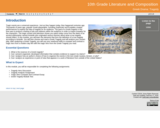
10th Lit Comp 17 10th Lit Comp Greek Tragedy. Greek Drama: Tragedy. Introduction Key Terms Introduction to the Greek Drama Structure and Allusions Reading the Greek Drama Module Wrap Up Greek Tragedy Structure and Literary Allusions Final Assessments
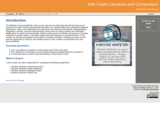
10th Lit Comp 17 10th Lit Comp Narrative Nonfiction. Narrative Nonfiction. Introduction Key Terms Elements of Narrative Nonfiction The Biography Autobiography and Memoir Analyzing Works of Narrative Nonfiction Elements of Analyzing Works of Narrative Nonfiction Steps of Nonfiction Analysis Nonfiction and Narrative Writing Module WrapUp
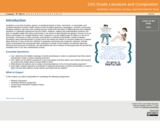
10th Lit Comp 17 10th Lit Comp Nonfiction. Nonfiction: Speeches Essays and Informational Texts. Introduction Key Terms Elements of Nonfiction Types of Nonfiction Introduction to Rhetoric Nonfiction Analysis Nonfiction Speeches and Texts Module WrapUp Final Assessments
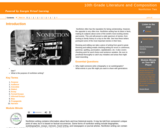
10th Lit Comp 10th Nonfiction Two. Nonfiction Two. Introduction Revising and Editing Your Writing Nonfiction Review Biographies and Autobiographies Assignments Review Final Assessments Novel Research Project Requirements